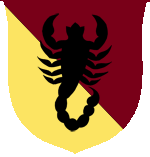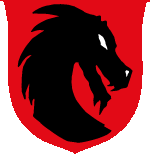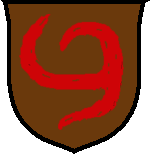
Pictorial Guide to Some Major Armor Styles
So I figured I'd throw together a short essay on some of the major armor styles that existed between 1350 and 1650. Hopefully this will help give people some ideas.
Late Transitional Plate
Late 14th century. During this time, plate defenses were being worn over full hauberks and chauces of mail. Limb defenses are typically pretty simple. Gauntlets are fingered with hourglass shaped cuffs. Not shown in this picture is the typical, simple spaulder of the time. Breastplates are globose in shape and typically don't include a backplate or an attached fauld. A visored bascinet is the helmet of choice.
Milanese (Italian)
Mid 15th century. This style is characterized by simple rounded shapes that give a bulkier, more ominous appearance. Limb defences become slightly more complex by adding reinforcing plates, enlarging the size of fans on couters and polyns, and adding articulating plates to the tops of the cuises. Mitten style gauntlets become more popular. Torso protection has evolved into the full breast and back with plackarts and faulds. Spaulders have evolved into full pauldrons that extend down to cover the armpits and parts of the chest and back. If I remember correctly, the armet was the more popular helmet in Italy at the time, as opposed to the barbute that's shown with this armor.
German Gothic
Late 15th century. Characterized by close fitting bits and LOTS of fluting. Arm harness is typically 3 piece and pointed on. Legs are usually more complex and ride higher up the leg to the hip eliminating the need for a long fauld. Finger gauntlets or fluted mittens (fluted to look like individual fingers) are most common. Long, pointed removable toes come into fashion. Breast and back are less rounded and have a much shorter fauld. Pauldrons are more compact. The sallet (or some other form of helmet made to look like a sallet) is the helm of choice. Neck protection is typically a bevor.
Maximillian
Early 16th century. A melding of the rounded Italian shapes and the Gothic flutes. EVERYTHING has parallel flutes except the greaves which are never fluted. Arms can be pointed or articulated and often have turners at the bicep. Shell shaped couters are common. Spaulders make a comeback with besegews as added protection for the armpit. Legs return to a simpler construction. Breastplates harken back to the globose shape but are cut square at the top with huge roped rolls and often gussets. Faulds become longer with the shortening of the cuisses. Fluted mittens are the primary hand protection. Sabatons develop wide duck like toes.
Gilt and Etched Peascod
Late 16th century. Much more elaborately decorated style that pulls a lot from the silhouette of cloth fashion of the time. Almost all surfaces are etched with bands of gilt decoration. Arms are typical articulated construction with turners. Couter fans tend to wrap all the way around and are riveted on both sides of the elbow. Shoulder protection is typically of asymetrical pauldron construction. Legs are pretty typically rivet articulated, though cuisses are beginning to become laminated instead of one main piece with a few lames at the top. Breastplates have a lower waistline and a medial ridge that usually ends in a point, forming the typical peascod shape that mimicked male upper body clothing of the time. Faulds are typically only one or two lames with long segmented tassets. Finger gaunts come back in with segments on the back of the hand for more flexibility. Neck protection is usually in the form of a segmented gorget. The burgeonet becomes popular as head gear.
Black and White
Late 16th Century. Contemporary to the above style, but less complex decoration. Usually only a 3/4 suit, so has long tassetts that go down to the knees, sometimes with integrated poleyns. Shoulder protection is usually integrated into the gorget and consists of lames that flow over the shoulder.
Cuirassier
Early 17th century. Similar to the black and white. Arms and gaunts similar to the Peascod style. Symmetrical pauldrons. Breastplate retains medial ridge, though point becomes less pronounced. Fauld is extremely short with very long laminated tassetts that end in poleyns. Helm is more of a closehelm design but maintains the brim of the burgeonet. Frequently, rivits are used in abundance as a form of decoration.






